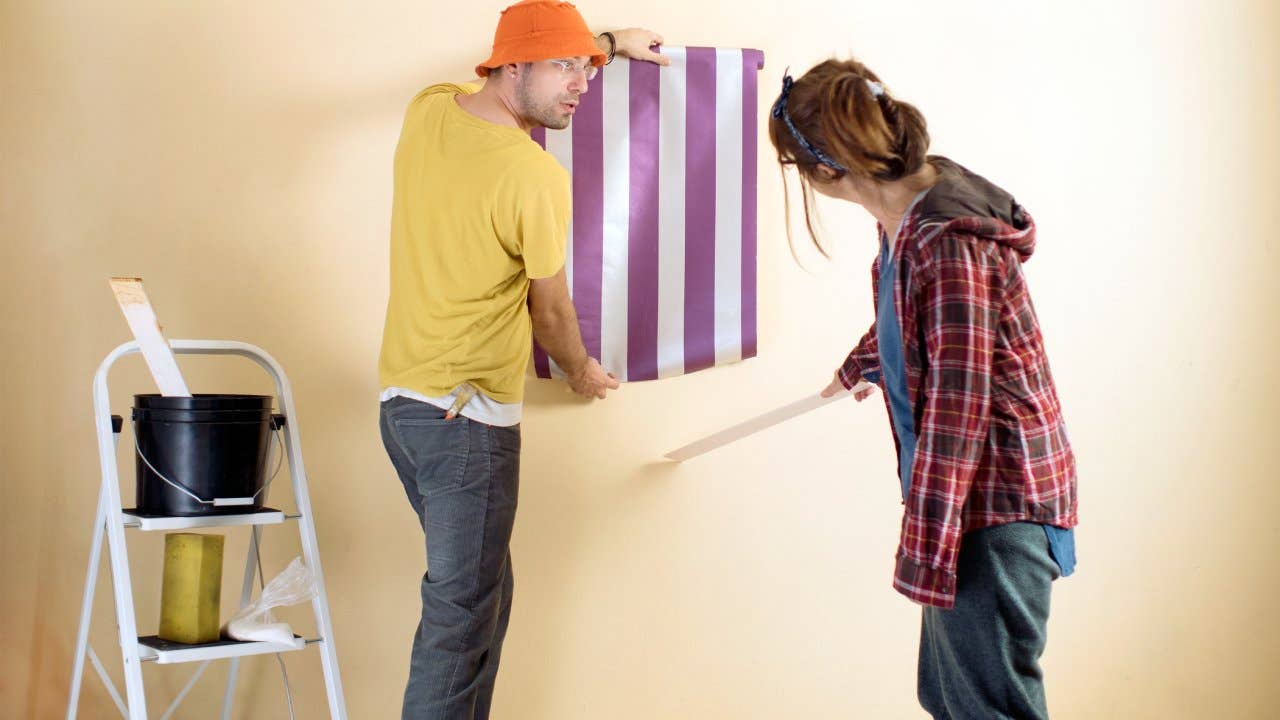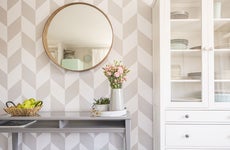Rentals and renovations: 5 easy, economical remodels for a home you don’t own

The Bankrate promise
At Bankrate we strive to help you make smarter financial decisions. While we adhere to strict , this post may contain references to products from our partners. Here's an explanation for .
With home prices and mortgage rates on the rise, it’s not surprising that many Americans are opting to rent rather than buy (or continue renting for the time being). Unfortunately, rental properties don’t always come in the greatest condition, and as a renter, you may assume that you’re stuck with whatever you’re given.
Thankfully, that’s often untrue. It’s entirely possible to upgrade a rental home to make it feel like, well, home – without investing too much money or putting your security deposit at risk.
Here are five renter-friendly remodeling ideas. From refreshing your walls to switching up your window treatments, each of these fix-ups is simple enough to complete on your own but significant enough to make a noticeable difference in your daily life.
1. Freshen up the walls
Contrary to popular belief, many landlords will allow you to paint your walls – as long as you get prior approval. Some may require you to paint them back to their original color before moving out, while others may not. According to HomeAdvisor, painting a room yourself (without hiring a professional) should cost between $200 and $300.
If painting isn’t an option, consider using peel-and-stick wallpaper instead. Not only is it easy to apply and available in tons of colors and patterns, but it can also be removed when your lease ends. Plus, it’s cost-effective, starting at around $25 per roll, which covers about 30 square feet.
If you like the exposed-brick look, another option is faux-brick panels — plywood-like sheets, made of synthetics or sometimes even thin layers of the real thing, that are mounted onto a wall with screws.
2. Upgrade knobs and hardware
Swapping out the old hardware on your cabinets, drawers and doors is another quick and easy rental fix-up. Whether it’s in your kitchen, bedroom or bathroom, replacing outdated doorknobs, cabinet handles and drawer pulls can instantly modernize your space.
Even better: As long as you keep the old hardware, you can put it back on before you move out – and your landlord will be none the wiser (as long as you don’t drill any new holes). New knobs, handles and pulls vary quite a bit in price, starting around $1 to $2 per piece (according to Angi) and going up to $100 and over.
3. Switch out shower heads
If your rental property is outfitted with old shower heads, it can create more than just a cosmetic problem. After years of heavy use, water fixtures can become less effective, leading to leaks, mold growth and poor water pressure. Fortunately, you may be able to address some of these issues by replacing your outdated shower heads.
The process is simple and generally takes less than an hour. You’ll need a few basic tools and supplies, including electrical tape, pliers, a wrench, thread seal tape and a new shower head. The overall cost will depend on the type of shower head that you choose, but you should be able to make this upgrade for under $100. Plus, if you hold onto your old shower head, you can switch it back before you move out and take your new one with you.
4. Add temporary curtains
The right window treatments can make or break a room. However, many landlords prioritize function over style in this department, leaving renters with unsightly blinds that don’t look quite right. Unfortunately, you often can’t remove them. “It may surprise you that changing window treatments isn’t allowed in most lease agreements,” said Aaron Lebowski, a certified interior designer at Juliei Salone, a home design site.
But there are a few workaround options. Instead of removing the blinds, you can cover them up with temporary curtains – as long as you don’t drill any holes into the wall or window frame.
There are several ways to do this, including using self-adhesive command hooks or tension rods. Costs will vary depending on the curtains and hanging method that you pick, but you can make this upgrade for $50 to $100. Either way, it’s a good idea to let your landlord know so they aren’t surprised if they come over, Lebowski says.
5. Fix the floors
Not crazy about the floors in your rental property? There are many temporary options that can transform a floor, and by extension, the entire room. For example, you can arrange carpet tiles (pre-cut squares of carpet that fit together to cover your floor) to make any room feel warm and cozy. Or, you can use peel-and-stick vinyl flooring to add a stylish touch to your space. Similar to peel-and-stick wallpaper, this type of flooring has an adhesive backing and comes in a roll that can be cut to fit the dimensions of your room. Although vinyl, it’s designed to look like wood, ceramic tile and other traditional flooring materials.
“Stick-on floor tiling is easy to find and comes in an impressive amount of colors and patterns,” said Volodymyr Barabakh, co-founder and project director at Structural Beam, a Chicago steel construction company and general contractor. “It will not only give you the chance to add your own touches to your rented accommodation but will also allow you to really step outside your comfort zone without having to commit long-term to any of the decor changes made.”
As you might expect, the costs of updating your floors will depend on the type of material and the size of your room. However, you can find carpet tiles and peel-and-stick flooring for around $1 to $2 per square foot.
Final word on renovating a rental
There are countless ways to renovate rental homes and enhance your living experience – without breaking the bank. Before you take on any remodeling projects, though, it’s always a good idea to run any ideas by the owner of your rental. “Talk to your landlord about the updates you’d like to make and see if they’re willing to work with you. If they are, try to come up with a plan that will satisfy both of you,” says Chloe Hughes, the editor-in-chief of Foter, a design and interiors magazine. That way, you don’t run the risk of voiding your rental agreement or losing your security deposit.
And she recommends, if your landlord does approve, make sure to get their permission in writing.
Related Articles



